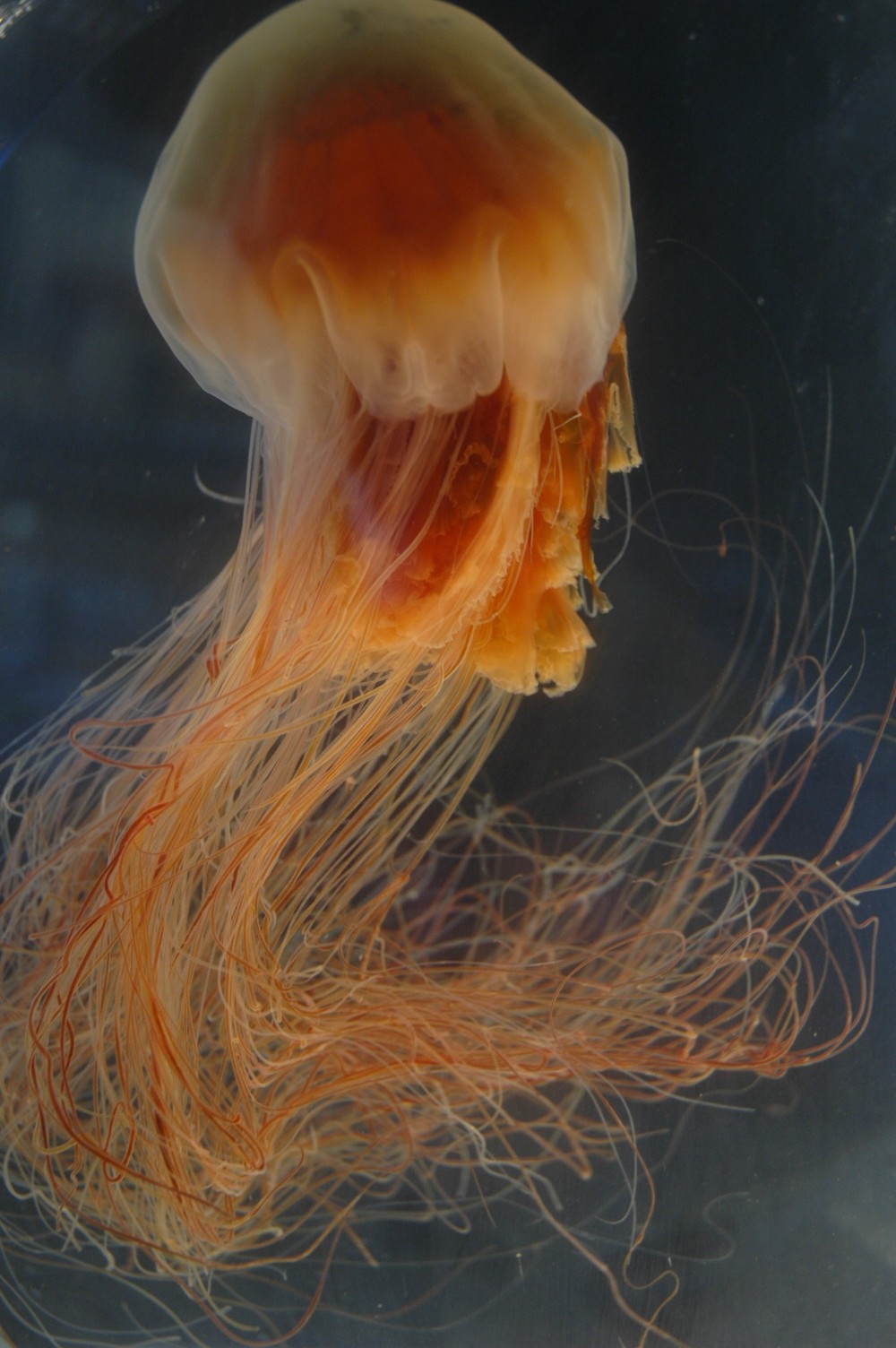How to Distinguish from Similar Species: Phacellophora camtschatica also has 16 large marginal lobes, but they are not in pairs and between these are 16 smaller lobes resembling fish tails on which the rhopalia are found. The tentacles are in 16 linear groups (not 8) of up to 25 tentacles per group, hanging from the subumbrella. It is usually a lighter yellow color than is Cyanea capillata.
Geographical Range: Arctic and north boreal. In the Pacific it is common as far south as Washington, occasionally seen in Oregon, and probably not as far south as California. In the Atlantic it can be found as far south as Florida and Mexico.
Depth Range: Pelagic
Habitat: Pelagic near surface, in polar and temperate coastal waters.
Biology/Natural History: Probably lives less than one year. This species can give a painful sting with blisters that lasts for several hours. It is the most likely jellyfish in our area to sting you, and may even trigger allergic shock. Feeds on small fish and crustaceans. Several symbionts may be found on the bell, including juvenile pollock and other fish, and decapod megalops larvae. The gonads of this species are 4 highly folded, ribbonlike structures that hang down under the bell and alternate with the 4 oral lobes. This is the world's largest jellyfish.
| Return to: | |||
| Main Page | Alphabetic Index | Systematic Index | Glossary |
References:
Dichotomous Keys:Flora and Fairbanks, 1966
Kozloff 1987, 1996
Smith and Carlton, 1975
General References:
Harbo,
1999
Kozloff,
1993
McConnaughey
and McConnaughey, 1985
Niesen,
1997
Sept,
1999
Wrobel
and Mills, 1998
Scientific
Articles:
Reum, Jonathan P., Mary E.
Hunsicker, and
Caroline E. Paulsen, 2010. Species composition and relative
abundance of large medusae in Puget Sound, Washington.
Northwest
Science 84:1 pp. 131-140
Web sites:
General Notes and Observations: Locations, abundances, unusual behaviors:
This is one of the most prominent and common jellyfish species seen around Rosario, especially in late summer.
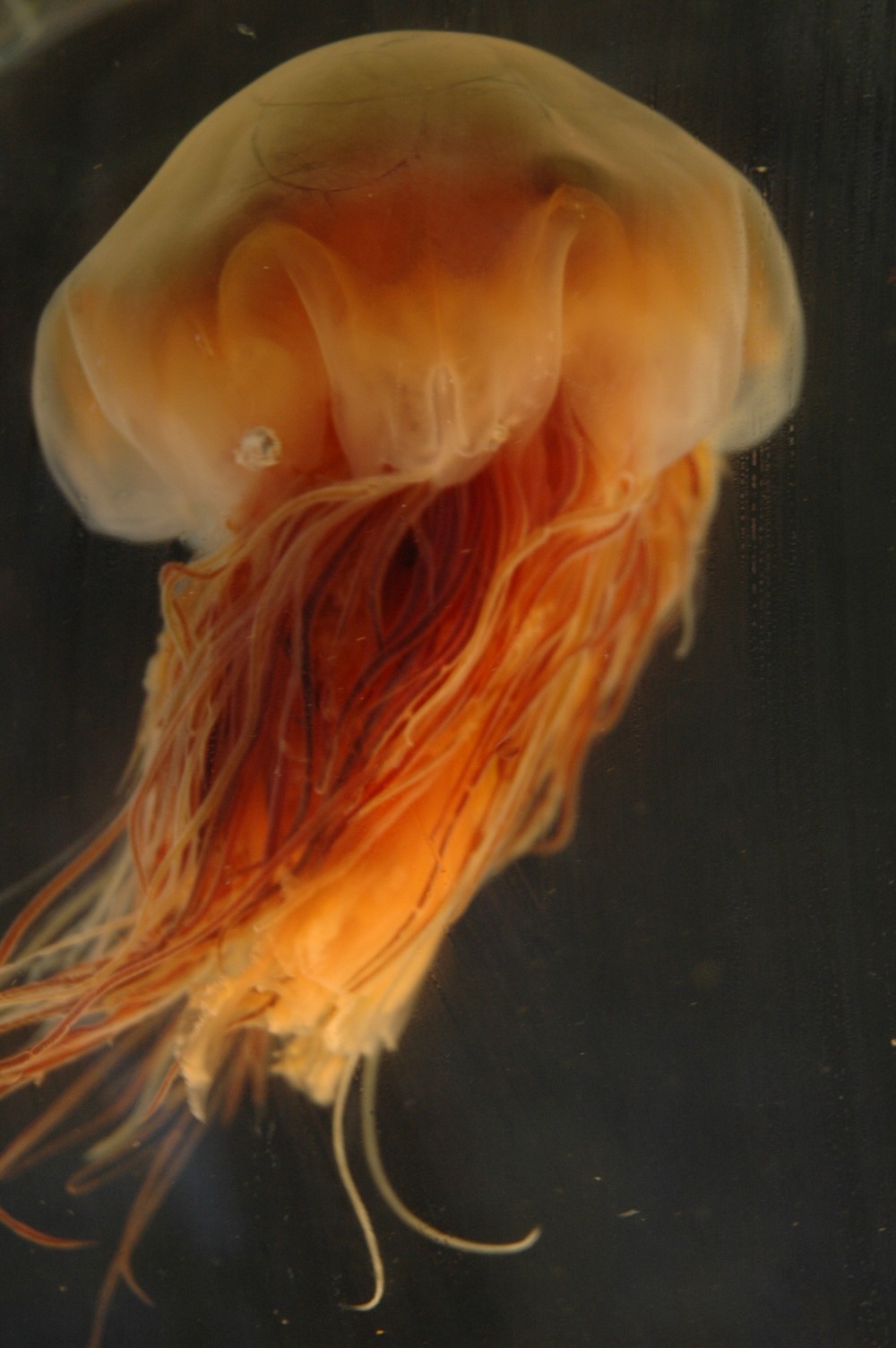
This photo of the same individual as above shows the
tentacles more
contracted but the oral arms extended.
Note the crab megalops larva riding on the outside of the
bell.
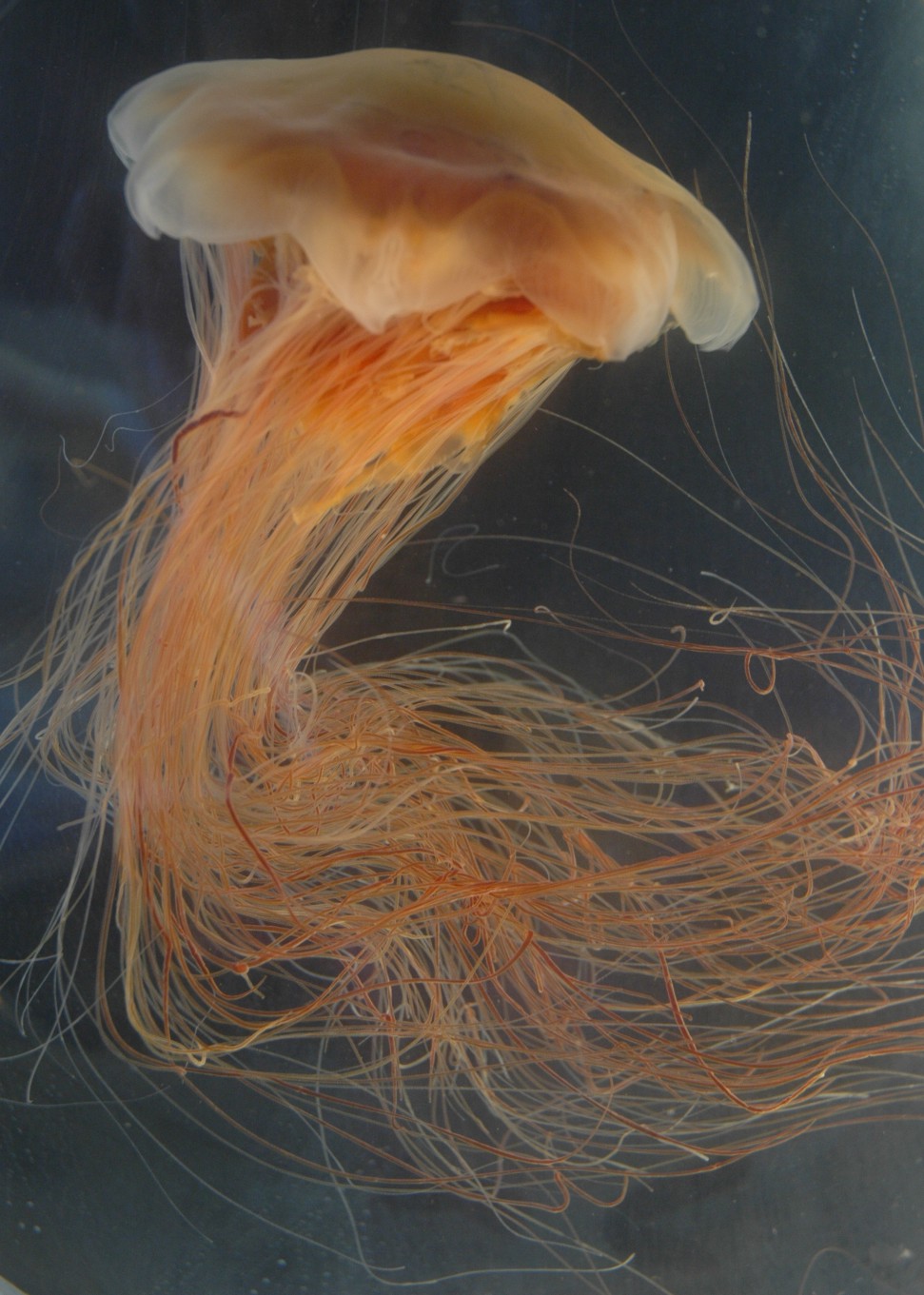
In this view the bell is expanded, ready for another power
stroke.
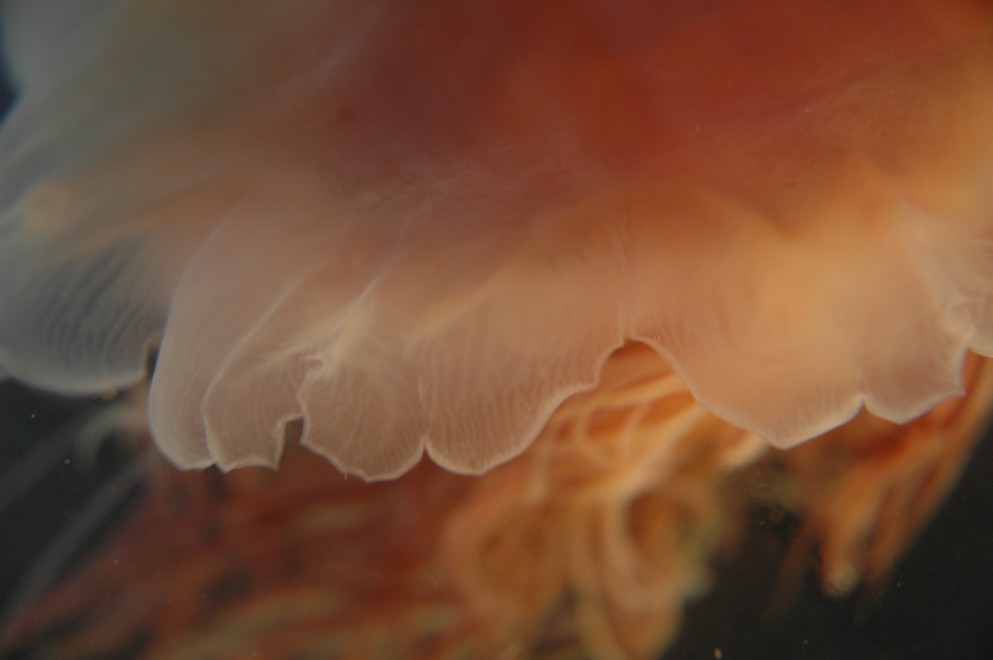
The margin is divided into 8 pairs of lobes, with deeper
notches between
pairs. This photo shows 3 sets of lobe pairs. The
rhopalia
are on small flaps between the 2 lobes of a pair.
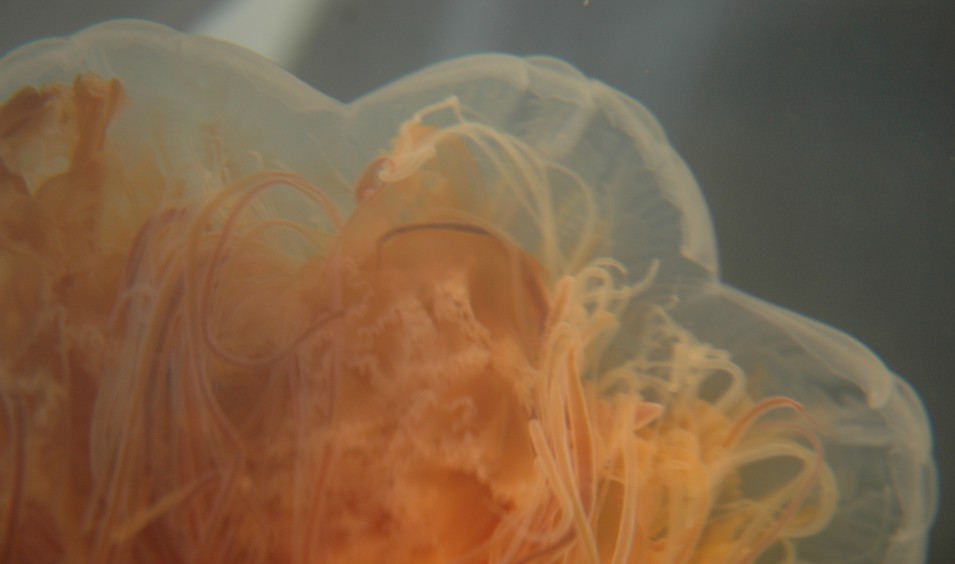
The tentacles are in 8 U-shaped groups of 4 rows each,
centered between
the pairs of lobes. This view from under the bell basically
shows
that there is such a
profusion of tentacles, oral arms, and gonads under the bell
that it
is hard to distinguish any discrete U-shaped groups!
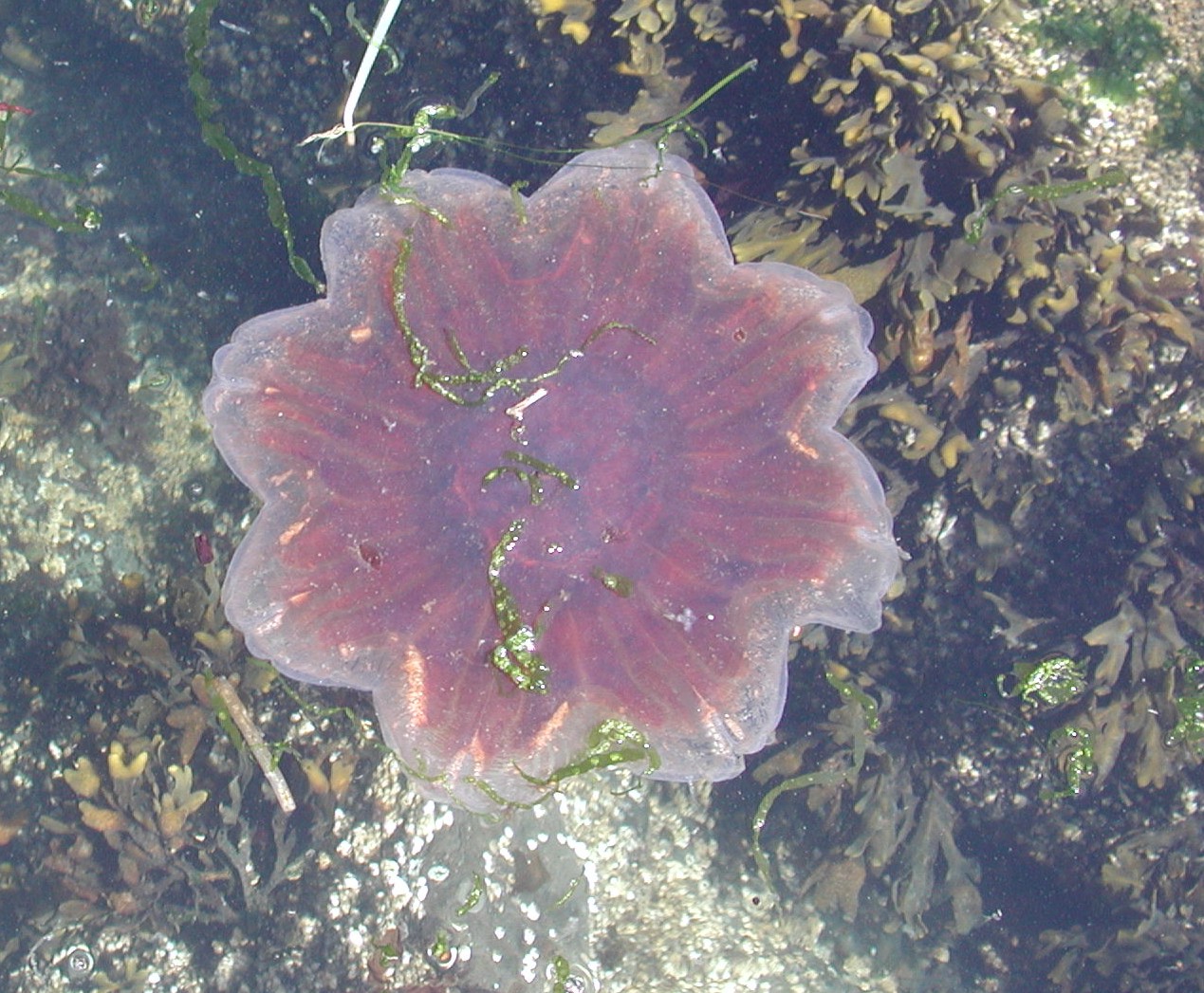
The
animal can flatten its bell out so that the lobes project to the sides,
as seen in this individual floating near a jetty.
Authors and Editors of Page:
Dave Cowles (2007): Created original page (an older page was prepared by Christina Smith)
Jonathan Cowles (2007): Updated page with CSS
